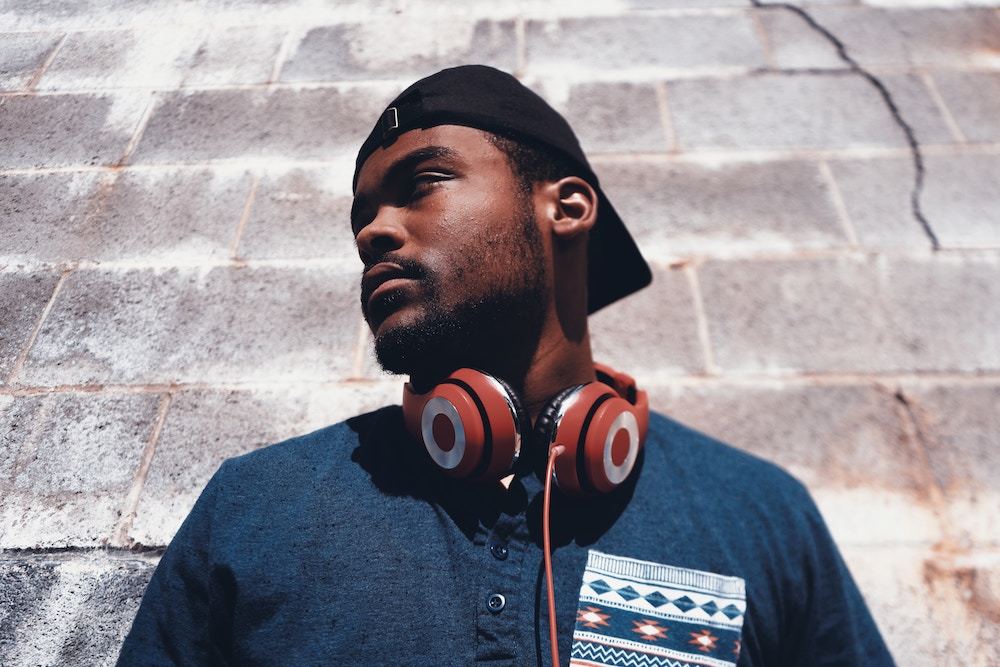Creative Thinking
What Makes Us Love a Challenger Brand? It’s All About the Brand Storytelling
By Lauren McMenemy on January 30, 2018
You've seen that meme pinching Tom Goodwin's thoughts on challenger brands, right? The one that proclaims Uber, the world's largest taxi company, owns no vehicles; that Airbnb, the world's largest accommodation provider, owns no real estate; and that Alibaba, the most valuable retailer, has no inventory.
Well, those ubiquitous challengers are nearly a decade old (sick of seeing it, Goodwin recently updated the thought), and a new wave is coming through, fighting to be heard. It's a cycle we've seen since the beginning of consumerism, actually-challengers aren't a millennial phenomenon, as Pepsi will attest-but the modern media is downright fascinated by the concept of a challenger brand. Perhaps it's a sign of our over-consumed society, or maybe it's just because we always love an underdog. One thing's for sure, though-those challengers know how to tell a great brand story.
"A challenger brand can take many forms; it's more of a mindset than a specific set of rules," says Kohlben Vodden, founder of StoryScience, a brand agency specializing in working with challengers. These brands tell stories that "by proxy make us feel empowered," he says: "Their stories teach us that to be successful we should do the things that we've been told we shouldn't all our lives. They tell us that real success lies in breaking away from the pressures of social norms, challenging authority and being disagreeable. Stories like this, that make us feel individually empowered, are exciting. These brands represent character strengths that we humans universally hold up as positive and admirable qualities-bravery, perseverance, fairness."
Image attribution: Nathan Dumlao
Vodden spent his career working with market leaders to fend off the challengers before he flipped it around and founded StoryScience, so he has seen the brand story from both sides of the fence. He now works to help challenger brands "outsmart their competition rather than outspend them." To stand out, he says, challengers need to look beyond the rules and create a completely new game. "If you play the same game as the market leaders you will have to play by the same rules. That means competing on spend." So when it comes to content, that means "using data to identify niche or untapped editorial territories, or distribution and promotion opportunities."
"Subject matter and tonality also play a role," says Vodden. "Established brands tend to be more conservative and want to appeal to as broad an audience as possible. This is a huge opportunity for challenger brands. While there is no magic formula because there are many variables to consider, we have found that there are a few guiding principles that work best for challenger storytelling, including being hedonic versus utilitarian, bold versus conservative, and appealing to the audience's emotions versus their intellect. These three principles are proven by both behavioral science and neuroscience.
"Having said this, challenger brands should always have a clearly defined and documented tone of voice and be true to it. If you're going to be bold, be consistently bold. Following so-called industry 'best practice' is a surefire way to end up being beige. Beige is ugly and boring-be different."
To get to the heart of how challengers remain such an alluring enigma in the world of brand storytelling, we spoke to companies who are challenging their category in different ways; their stories represent just a handful of the many, many amazing brands doing amazing things out there. We'd love to hear your own stories about challenging the market and being brave enough to put your head over the parapet.
Deezer: Taking on the Soundtrack to Your Life
Image attribution: Andre Hunter
Utter the words "music streaming service" and your brain likely crawls over the ashes of last.fm, Tidal, and Pandora as it reaches for Spotify. It's a feeling Deezer knows well, despite connecting 12 million active users around the world to over 44 million tracks across 187 countries worldwide. Despite giving instant access to the most diverse global music streaming catalog on any device-and with partnerships with the likes of Manchester United and the Miami Dolphins in hand-Deezer is firmly a challenger brand.
"Music is often mistakenly perceived as being 'one size fits all'-in which tracks, artists, playlists and genres can be suitable for anyone and everyone," says Phil Moore, Deezer's VP of Northern & Southern EMEA. "We understand how personal music is, with songs and audio content having a different meaning for each person. Our content strategy aims to embrace this and to create campaigns, products and content that resonates with an individual's personal tastes and preferences. This ranges from social activations where we bring artists and fans closer together, to Deezer Next, which supports and nurtures breakthrough artists giving them a bigger platform from which to promote their music."
Echoing the challenger mindset, Deezer's storytelling aims to "lift the lid on the unknown," says Moore. "Larger brands will fall into a trap of 'window dressing'-using the biggest global talent and personalities to help tell their story. As a challenger, we want to also support the emerging artists or those interesting individuals that have something different to say, in a tone that is approachable to a wide range of audiences.
He continues: "Being a challenger brand often makes storytelling more interesting. We can be braver and take risks that other companies just cannot always do. Stories are often more edgy, raw, and real, which is very compelling for an increasingly digitally-savvy audience that has started to become resilient to overly corporate messages.
"The most important thing for challenger brands to stand out in a crowded space is to always keep their sense of identity and constantly remind people of what they stand for, their beliefs and their passions. To showcase that raw sense of identity that others can relate to is so important."
Shapr: Beyond Likes and Shares in Business
Mandy Menaker, head of PR and brand development at Shapr, "prefers the notion that a challenger brand is focused on challenging outdated concepts and improving people's lives through mission-driven actions." In that, she describes the Shapr mission to a tee.
Shapr is taking on the likes of LinkedIn by pushing connections to get offline and build meaningful human relationships that go beyond a simple like or follow. The goal, she says, is to spark conversations that lead to actual collaborations, job offers, and friendships.
"Focus less on how a product works and more on the value that it brings," Menaker says of Shapr's brand storytelling approach. "As a brand focused on networking, we need to share how lives can be shaped through using Shapr to meet other people."
As a brand built on the stories of its users, Shapr tries to include two or three concrete success stories in all of its content-in fact, a newsletter asking users to share their best Shapr stories through a Google form resulted in more than 400 responses in a single hour. "We love including stories that go a bit beyond typical networking and show the ways in which Shapr can change your life. For example, one of our Washington, DC users found a bridesmaid through the app after a Shapr meetup turned into a close friendship. Another user in San Francisco completely pivoted her business after conversations through Shapr helped her identify a deeper need that her product could fill.
"Our focus is on building human relationships so we keep our tone as human as possible. In all Shapr storytelling, we strive to be clear, upbeat and conversational. We also strive to be humble and transparent in communications coming directly from us, including emails and newsletters. We want our users to know that we are human too, that we make mistakes sometimes, and that we have their best interests at heart.
"Challengers are mission-driven. They are guided by ideology over sales and want to create a positive cycle of change. To stand out, you don't need a viral video. You need customers who are raving about how your service or product has changed their lives. Being a successful brand is not about having the most innovative product, the best website, or the most engaging video content. Being a successful brand is about continually adding value."
Hunter & Gather Foods: Bringing the Audience on a Personal Journey
The personal is important to Hunter & Gather Foods, too, though in a different way: Co-founder Jeff Webster says the very essence of the brand lies in the personal lives of its founders, a "celiac girl and experimenter boy" building an avocado oil brand based on their life savings. It's the classic challenger brand story.

Image attribution: the founders of Hunter & Gather Foods, supplied by Jeff Webster
"Our story so far has been very personal and we have made it a priority to bring our customers and tribe on the journey with us in these very early days. This audience will be the bedrock of our brand, which means they need to feel part of the brand and essentially part of the tribe," says Webster. To do that thus far, they've incorporated an informal content strategy focusing on being value-led. "We love to share ideas that we approve of as part of our Real Food Lifestyle. We share insights into our lives and previous health issues and experiences, and be as informal as possible. I mean, we're serious about what we do. We want our content to be informative, a go-to resource for customers and the wider audience in general, but we want there to be a humor element and for us to be viewed as approachable."
That can be as simple as getting reactions on Facebook to new packaging concepts, to sharing photos of "avocados looking beautiful." The human element works well, too; when they won an award at Food Matters Live, Instagram went wild.
Webster believes your brand story doesn't just end at what you share online: "Be disruptive through packaging and branding. Provide value-led content for your audience. Tell the story behind the brand and how it started. Allow the audience to join you on your highs and lows. Have a phenomenal product that looks, feels and tastes great."
"Challenger brands are real and genuine," he says. "Everyone seems to like backing the underdog and us challenger brands are usually that-up against the established big boys but attempting to carve out a space and redefine. I think it gives people hope. It allows people to follow the journey of development and be entwined in a story and plot line. It's almost like following a series on Netflix-people want to see the plot twist, the new characters, the journey. Following this kind of story allows others to dream and hope that one day they will achieve or accomplish change."
Beyond: Disrupting Death
Forget space-maybe death is truly the final frontier when it comes to market disruption. That's where Beyond (formerly Funeralbooker) is setting its sights.
"One of the big reasons why challenger brands like us, or Airbnb, or even Uber, are successful is because we've been able to develop a new kind of service that puts more power into the hands of the consumer and takes it out of the hands of the large, established chains," says Maya Traykova, head of digital marketing at Beyond. "Our kind of service, and particularly the kind of transparency it offers for people in need, is revolutionary-especially for what has been a very traditional, opaque, and almost old-fashioned industry, where there is no regulation to protect consumers from chains charging high prices or to set a standard of care."
But Beyond is working with some trickier factors than booking a room for the night-first and foremost, our general reluctance to talk about death. They use that to their advantage, looking to provoke or encourage conversations-about rising funeral costs, about what it is that people really want from funeral services, and about the way in which funerals are changing. And they do it in a rather innovative and engaging way. Take, for example, last year's April Fool's Day piece looking at the "CremMate," a "revolutionary piece of (non-existent) technology that would allow families to perform cremations at home."

Image attribution: The "CremMate," supplied by Beyond
"The campaign got a great response, saw a lot of press attention, and we actually had a few inquiries from people asking if they could have one," says Traykova. "But the great thing about it for us was that it allowed us to start a conversation about how much these services cost. It wasn't meant to be merely provocative-the aim was to raise awareness about rising funeral costs. When you think that the average cremation is £753, on top of all the other funeral costs, you may well start wondering about whether there's another way.
"Another important piece for us was our report, "The Reaper Calls for Dignity," which examined the business practices of the largest funeral chain in the country. It was an incredibly in-depth piece of research that, among other things, revealed that their profits have been driven by buying up independent funeral directors to offset the loss of customers put off by high prices. It's a bit of a gutsy move (the Times called us 'cheeky') but we're hoping that this will push larger providers to be more honest about the impact of their costs."
The cheeky won't work for everyone, though, and Traykova acknowledges the need for care with storytelling: "We aim to be respectful and compassionate, but also honest and informative. We use clear language so that we're easy for people to understand and try to cut through the jargon. When people come to our site, they're usually going through a very difficult time: not just because they might be grieving but also because the funeral planning process can be very complicated and stressful. By offering very clear, simple, honest advice, we try to take away some of that burden and make things easier for them.
"I think you really have to become a champion for the consumer and to be consistent in that as well," she continues. "For us, that means making sure that we're actually taking on the issues that people care about, and maintaining an honest and open approach in everything. Once you establish trust, people will come to you-and you can only establish trust by being trustworthy."
Vestd: Simplifying Company Share Schemes
"We now live in a day and age where if something doesn't work efficiently, people don't just tolerate it-they question it," says Ifty Nasir, CEO of fintech firm Vestd. "If you're someone who feels under-served, or not served at all, by a service or product, then it's incredibly frustrating. So when you come across a company who has recognized your pain and is willing to do all the hard work to fix that problem for you, you automatically want to support them."
Vestd helps companies give shares to employees simply, turning equity into an easy-to-distribute currency that helps people and businesses invest in each other. And fintech is an industry where disruption is rife-where challenger brands abound, and where it's getting increasingly difficult to stand out.
Leveraging those who have already taken the trust leap is an important brand storytelling strategy for fintech firms, and one that Vestd harnesses well. To bigger competitors, they are seen as a marginal player, but for others in fintech disruption, there is potential for collaboration, so that storytelling takes on an additional importance-and a new angle.
"Distributing equity might be a big step for a business; it's not something they want to get wrong. Our customers need to know they can trust us. Our team has decades of experience in this area of business so it's important for us to get that knowledge across. However, we pride ourselves on being a modern and more customer-focused business in comparison to others serving this market, so approachability and warmth also needs to be at the forefront.
"Our strategy is to talk to our customers and deep dive into the problems they face and questions they have so we can guarantee our content is highly valuable and useful. We can then tell a story that starts with the assurance that we completely understand our customers, the situation they're in, and the solution they need."
One of Vestd's best performing articles is "How to choose the best share scheme for your business," created to answer buyer questions. And the buyer journey is a series of questions to be answered, right? When working as a challenger in a tricky industry pushing a mission of simplification, sometimes the best way to stand out is to be simple with your content and storytelling, too.
Image attribution: Todd Quackenbush
Plum: the Robots Are Saving You Money
"I think the term challenger brand has changed slightly over the past few years due to the rise of brands positioning themselves as challenger brands, and it becomes a bit of a buzzword," says Daniella Camilleri, founding comms and community lead at Plum, a chatbot designed as a personal finance guardian. "It's useful to think about the difference between challengers and disruptors here, terms which are often used interchangeably. A disruptor is often based around making an old way of doing something easier, quicker, cheaper. A challenger goes beyond that. They are based around an ideology that an industry should be different. That's what makes Plum a challenger-we believe fundamentally in a whole new way of managing personal finances and are using AI tech to achieve that change."
Emerging at a time when AI and chatbots are everywhere-and when trust in finance is still a little fragile-Plum's brand story and tone of voice becomes even more important. She says for true challengers, producing content that is valuable to your audience becomes even more important, "as by default there will be a great deal of inertia about your topic."
"You need to make sure you are fresh, relevant, and interesting enough to reopen those conversations and get people round to a new way of thinking. Relevance is key here. As a challenger your raison d'être is changing the way things are, but if the way you change it isn't relevant or useful to anyone, it's a pretty big problem. You content should work around evidencing why things need to change and positioning yourself as the antidote.
"At Plum we are fortunate enough to have a great founding story and a highly relatable concept; wishing you had more savings and not wanting to really have to do anything to achieve that-it's a pretty easy sell!"
A chatbot's brand storytelling also takes on a different form to a more bread-and-butter finance brand; most content is delivered in the bot itself, and Plum uses a lighter and more personality-driven tone for that content. Camilleri cites a simple but incredibly effective recent content campaign: an Advent calendar that had more than 5,000 opt-ins within the first hour of going live, with about two-thirds of the user base opening a message every morning in December. The message? A Christmas cracker joke, every single morning. "It served to engage a large chunk of users, build our brand image as a friendly bot in a time where money is often tight, and generate organic word of mouth with people sharing their cracker jokes," says Camilleri. The jokes fit the established tone of voice-“friendly but not too chatty."
"I think as a challenger you want to be the antithesis of incumbents and corporates, but some brands can take this too far and jeopardize their reputability," she says. "You need to forge a unique voice, but over-familiarity can feel forced, lack authenticity, and appear a little tacky. This is an even more delicate balancing act in fintech; we want to shed the sometimes alienating, overly formal tone banks use without damaging our credibility or appearing immature. We want our users to feel like the conversation is personal, not just a formal or chatty default. I think the tone of a brand should be flexible dependent on the context, just like it is in real conversation."
Purplebricks: Moving Home without the Agent Fees
Image attribution: Ricardo Gomez Angel
You'll see a theme emerging throughout these stories: Start with your customers. The reason a challenger brand exists is that it sees a gap in the market, after all, and that gap exists because consumers need something else.
For Purplebricks, there wasn't so much a gap as a canyon: Real estate agents are a necessary evil, but people just don't like them or trust them. So this challenger got rid of commission percentages on sales and disrupted the market.
"We have a different business model to the high street but we recruit a lot of people from the traditional sector, and for them the way we approach estate agency is a breath of fresh air-they say it gives them a new lease on life," says James Kydd, director of marketing. "We don't hate the traditional sector, but it appears a few of them don't exactly love us.
"Often what challenger brands do is to change the value perception of a service or product. Many industries don't change very much from year to year, so it takes a challenger brand to create an environment of change. This often leads to people paying less money or getting a more convenient/better service, and that's what they love. People know it's hard to take on an established industry so they have respect for those who try it and even more for those who succeed. There is also a certain kudos to being an early adopter-in essence making a smarter choice than following the established way."
As if proving the theory that real estate needed to change, Kydd cites Purplebrick's "commisery" campaign as its most successful brand story thus far. It is, he says, based on "the simple insight that people don't like paying more for the same, or less"-and it resonated with the brand's purpose and its tone of voice, too.
"There is no point putting lipstick on a pig-you can't invent a tone of voice; it has to be a true reflection of how you as a company operate," Kydd says. "All our customer-facing staff are friendly, approachable, knowledgeable, and committed to offering a better type of estate agency service. Those are the building blocks for our tone of voice, along with a friendly and inclusive tone."
But one thing Purplebricks did, that many challengers do not, was invest heavily in getting the story out there. A "heavyweight TV advertising" campaign "hit a mass audience in a relatively cost-effective way," Kydd says: "So many brands try to do it on the cheap and as a result never reach a critical mass. If your awareness is low, your potential to challenge is low."
6Somewhere: "Permissive Naughtiness"
Sometimes a challenger comes along because its founder discovers a crazy fact about a favorite thing. Such was the case with 6Somewhere, whose founder Rik Roberts discovered that in the UK, cider only has to have 35 percent apple or apple concentrate in it to be called cider.
"As a consumer, I want to know if the cider I'm drinking is made from apple concentrate and has loads of added sugar in it," he says. That desire led to Roberts getting into the cider business-or cidre, given he works with French orchards-making his product from 100 percent apples, with no added sugar. It's even gluten-free.
Very new to the game, the 6Somewhere brand story is still somewhat in development. But Roberts has a strong origin story and is working with cideries that have been in the business for more than 125 years. He aims to engage with consumers, not preach to them, using animation to do the talking alongside the notion that "it's always six o'clock somewhere." He calls this "permissive naughtiness": "The tone of voice is meant to be self-deprecating but sincere-we make amazing cidre, and it's French, but don't hold that against us. I named our cidres after how I want them to make you feel-'Amour Fou,' 'Coup de Foudre,' 'La Douleur Exquise.' I want them to remind people of fantastic holidays in the summer in France."
And when it comes to being a challenger, Roberts has learned a lot in his early days. The top one? Be authentic. "With the power of social media, if a consumer finds you're not being truthful about your product, then it takes no time for that to get around. Be able to back up what you're talking about."
The alcoholic drinks industry will always have challengers-those craft presses and distillers who want something that's not available and fill the gap themselves. Roberts believes "most people want small brands to succeed."
"Who were you rooting for? Tom or Jerry? Spurs or Leicester City? The Empire or the Jedi? Most people want the small brands to succeed, partly because they can guess how much work it must take to make an impact; partly because it can inspire others to try; partly because most people believe that smaller companies hold their consumers in higher regard; and partly because everyone wants to stick it to the man. Challengers tend to be at the forefront of the newest trends and latest thinking, and because of this they are more newsworthy, more non-conformist, and therefore more interesting."
Bookaxe: Challenging Reading (and Amazon)
Image attribution: Christin Hume
It's a brave soul who takes on Amazon; Bookaxe has two of them. Scott and Lucy Cruikshanks have Amazon-owned Goodreads (and its 50 million users) in their sight with a new fiction discovery tech start-up.
"Challenger brands like Bookaxe are all about taking radically different approaches to solve problems more effectively than existing brands," says CEO Scott. "They see opportunities to be nimble, darting between the feet of giants such as Amazon and lobbing stones from behind."
He continues: "We're all about creating a product that solves a real problem. We continually monitor what our audience is saying about our competitors, identify their weaknesses and make sure we're delivering something better than them. Our story is built around the fact we offer a genuine, more effective alternative for their needs. In a market where a single established company is massively dominant, users can feel trapped and disillusioned. They want to know that something else exists."
Bookaxe aims to balance quality content with light-hearted delivery, "always keeping the need for creating conversations in mind," says Cruikshanks. "Our audience likes content that contributes to building a community. Since we have one single, giant competitor, we also find that reminding our audience that we are the very definition of a challenger brand-here to shake things up but also big underdogs-is something they really get behind."
And if anyone knows the value of an underdog story, it's a fiction brand co-founded by an author.
"The world loves underdogs," says Cruikshanks. "You only need to look at the novels Bookaxe recommends to see how almost all of literature's most beloved stories are populated by underdog characters. From Frodo Baggins to Katniss Everdeen to the Tortoise in The Tortoise and the Hare, people find it easier to root for those who have the greatest obstacles to overcome, who aren't seen to be handed their success on a plate, who are humble, and are at the greatest risk of failure, even. Should these characters manage to overcome their barriers and somehow win, despite the odds being stacked against them, the glory is all the more wondrous. It's the same with challenger businesses. The possibility of achieving that glory (and moreover, unsettling 'big evil corporations' at the same time) gets people excited. If your product is good enough that they think success is possible, it gets them fighting on your behalf too."
For more stories like this, subscribe to the Content Standard newsletter.
Featured image attribution: James Pond






